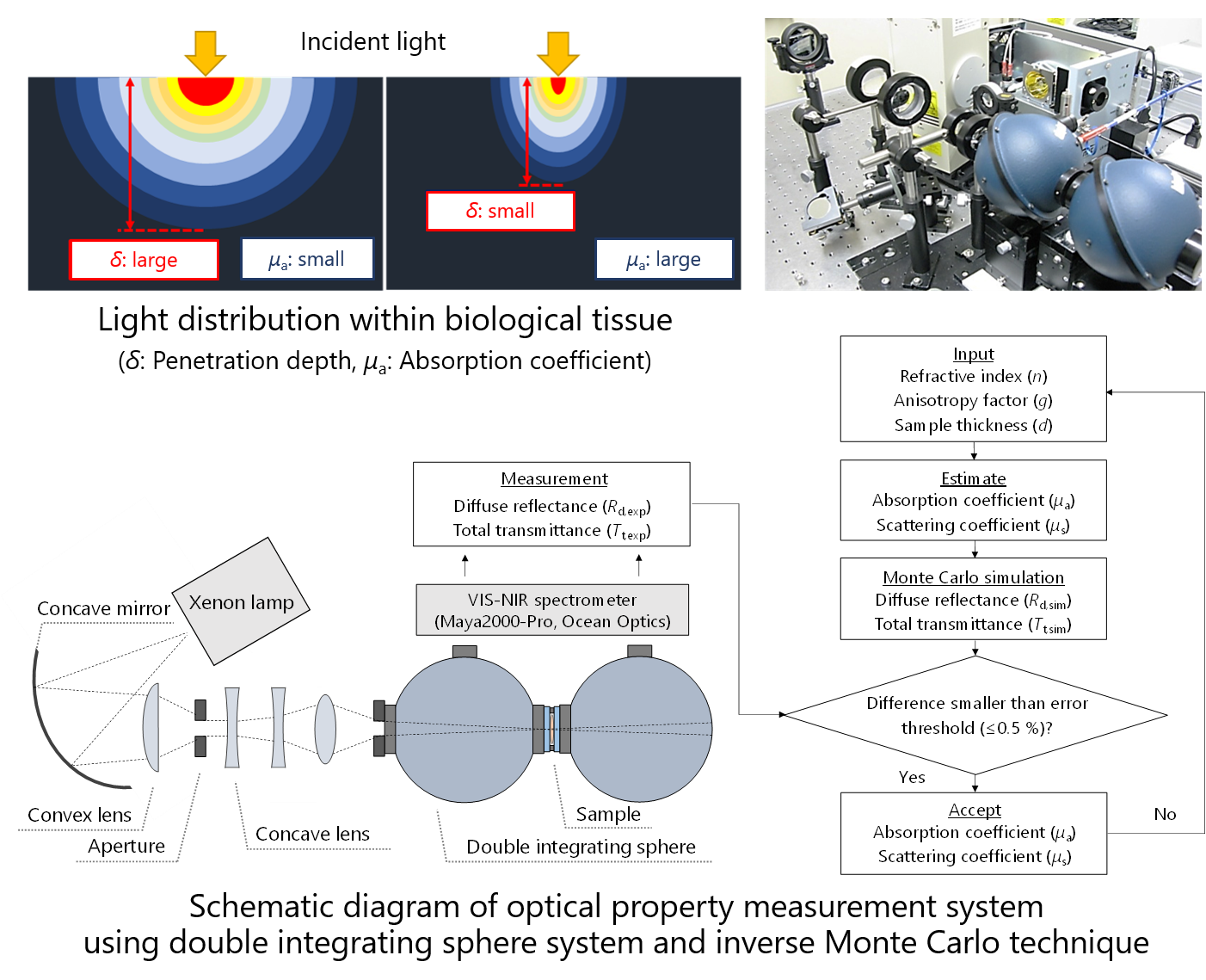Measurement of tissue optical properties
A lack of understanding of laser-tissue interactions can lead to diagnostic and therapeutic errors. Since light distribution in tissue affects the diagnostic and therapeutic effects, it is necessary to accurately measure the light distribution for safer and more efficacious photomedicine. The light propagation in biological tissue is determined by optical properties comprising the absorption coefficient, the scattering coefficient, the refractive index, and the scattering anisotropy factor, which produces its spatial distribution within irradiated tissue and the subsequent biological effects. We are investigating methods to obtain accurate optical properties of biological tissues in the visible and near-infrared range with a double integrating sphere spectrometric system combined with an inverse Monte Carlo technique. The use of measured optical properties combined with a numerical simulation allows to quantitatively analyze light-tissue interactions such as thermal response and chemical reaction, which leads to offering quantitative indexes for evaluating the safety and efficacy of laser therapy and diagnosis.

Takahiro Nishimura, Yusaku Takai, Yu Shimojo, Hisanao Hazama, Kunio Awazu: "Determination of optical properties in double integrated sphere measurement by artificial neural network based method," Optical Review 28(1):42-47 (2021).
Yu Shimojo, Takahiro Nishimura, Hisanao Hazama, Toshiyuki Ozawa, Kunio Awazu: "Measurement of absorption and reduced scattering coefficients in Asian human epidermis, dermis, and subcutaneous fat tissues in the 400- to 1100-nm wavelength range for optical penetration depth and energy deposition analysis," Journal of Biomedical Optics 25(4):045002 (2020).
Norihiro Honda, Katsunori Ishii, Yoshinaga Kajimoto, Toshihiko Kuroiwa, Kunio Awazu: "Determination of optical properties of human brain tumor tissues from 350 to 1000 nm to investigate the cause of false negatives in fluorescence-guided resection with 5-aminolevulinic acid," Journal of Biomedical Optics 23(7):075006 (2018).